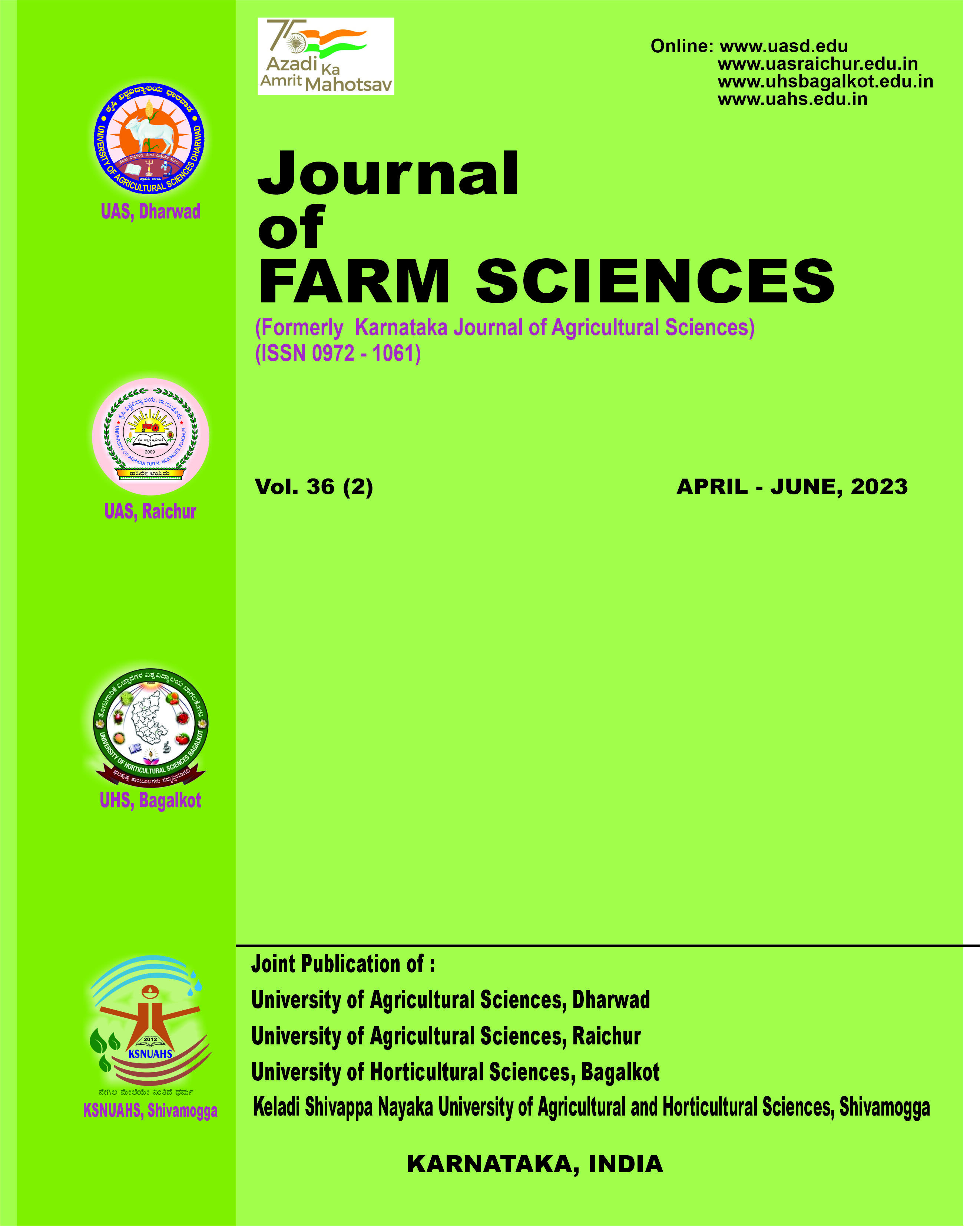Effect of different temperatures, relative humidity, incubation period on conidialgermination of Erysiphe necator causing powdery mildew of grapes
Keywords:
Grapes, Incubation period, Powdery mildew, Relative humidity, Temperature
Abstract
In vitro studies were conducted to assess the effect of different temperatures, relative humidity and incubationperiod on conidial germination of Erysiphe necator (powdery mildew) at the Department of Plant Pathology, College ofAgriculture, Vijayapur during 2020-22. Physiological studies of E. necator revealed that incubation of powdery mildewfungal spore suspension at various intervals indicated fairly satisfactory conidial germination from 18 to 22 hrs andultimately reached maximum at 24 hrs after incubation in distilled water. Among the different relative humidity (RH) levelsused for conidial germination, maximum germination was observed at 80 per cent RH (82.67%). howver, relative humidityranging from 80 to 85 per cent was found suitable for conidial germination of E. necator. Maximum conidial germination(83.69%) of E. necator was observed at 25 °C after 24 hrs and optimum temperature range for the conidial germination was20-25 °C.
Published
2023-06-25
How to Cite
N, S., M M, J., N H, S., S B , J., & P S , P. (2023). Effect of different temperatures, relative humidity, incubation period on conidialgermination of Erysiphe necator causing powdery mildew of grapes. Journal of Farm Sciences, 36(02), 157-161. https://doi.org/10.61475/jfm.v36i02.9
Section
Research Article
Copyright (c) 2023 Journal of Farm Sciences

This work is licensed under a Creative Commons Attribution-NonCommercial-NoDerivatives 4.0 International License.


